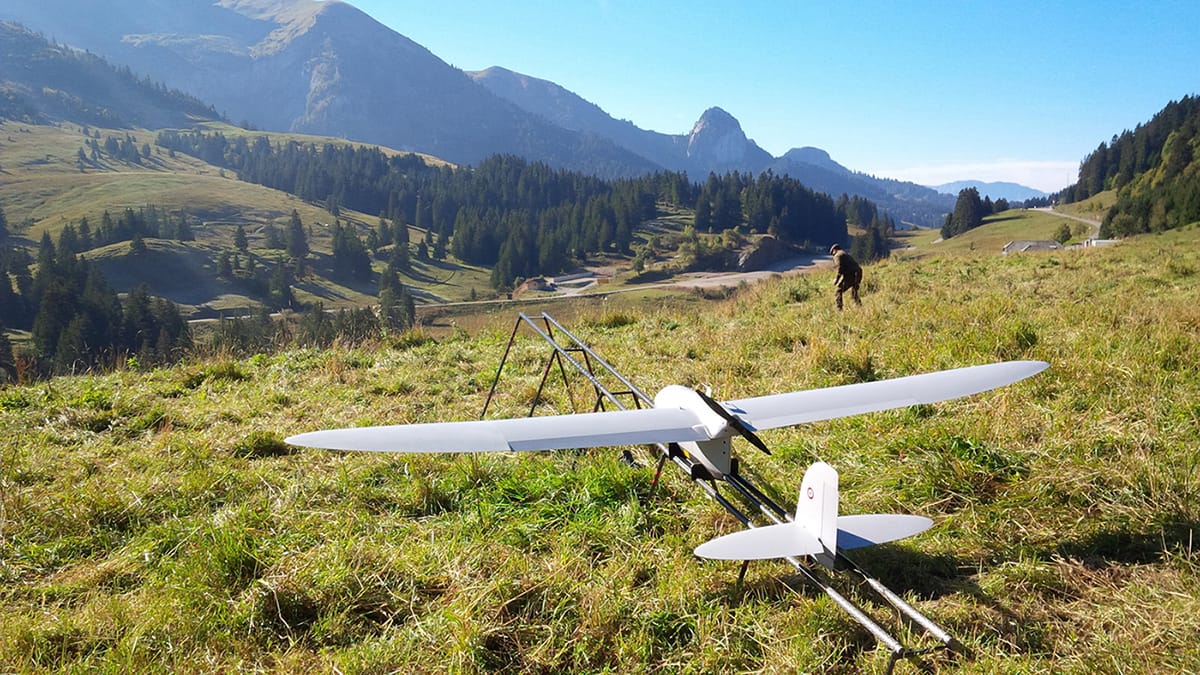The nature of conflict is shifting again. The resurgence of rivalries between major powers is bringing near-peer adversaries back into the battlefield, together with more technologically advanced threats and the increased likelihood of saturating attacks. In this context, Unmanned Aerial Systems (UAS), such as those of the Spy’Ranger family, are no longer just a key tactical advantage: they have become a critical asset in a wider strategy to maintain battlefield superiority in high-intensity conflicts.
SHIFTING PARADIGMS
The last couple of decades has been marked by asymmetric warfare in external theatres of operations. Deployed in particularly harsh, complex and unfamiliar environments, armed forces have faced high-intensity combats, yet have generally succeeded in maintaining a tactical edge thanks to their significant technological advantage. UAS, in particular, have been key to maintaining that edge, providing ground troops with essential eyes in the sky while keeping air forces out of harm’s way.
The resurgence of geopolitical tensions over the past few years, however, is shifting conflict paradigms again. Near-peer adversaries are more technologically advanced than insurgents and militia groups. They also have the capability to combine those technological keys with saturating fighting tactics leading to high-intensity conflicts.
UAS can be game-changers at the strategic, tactical and theatre levels in this new paradigm. Invaluable eyes in the sky, they can support frontline troops through Intelligence, Surveillance and Reconnaissance (ISR) missions. Providing armed forces with critical, real-time information, they can give them precious additional minutes to anticipate enemy’s movements, adapt tactics and win the battle.
SPY’RANGER LIGHT UAS FAMILY – DECISIVE ASSETS IN THE RETURN OF HIGH-INTENSITY COMBAT
Thales has leveraged years of experience working closely with customers and leading French technology providers and innovators to develop the Spy’Ranger family of mini and mini tactical UAS.
“Air dominance was, and will always be, a determining factor in winning battles,” says Pascal Sécretin, “but large tactical UAVs cannot provide the agility and flexibility that battlegroups need on the frontline.”
Seeking to go beyond the operational superiority of being able to carry out ISR missions while keeping troops and air crews safe, Thales designed the mini UAS Spy’Ranger 330 and the mini tactical UAS Spy’Ranger 550 to offer the best balance between agility, flexibility and performances. Seeking to promote the French industrial fabric, Thales entrusted the French aeronautic designer Aviation Design with the manufacture of the Spy’Ranger UAV in carbon fibre for lightness and robustness, and jointly developed with the French SME Merio the Thales’s Spy’Ball gimbal with state-of-the-art ISR capabilities. These systems offer optimal Size Weight and Power (SWaP) performances. “The Spy’Ball, developed with Mario and manufactured by Thales, offers high-definition videos and still pictures in three bands for different conditions: visible (day), near-infrared (end-of-day), and long infrared (day and night). The video processing takes advantage of complex algorithms developed and embedded by Thales in the Rafale fighter pods,” says Gilles Labit, Head of military UAV Department in Thales.
To provide battlegroups with the ability to act at very short notice in fast-moving, high-intensity combat situations, the UAS Spy’Ranger family has also been fitted with µTMA to provide resilient and secured high-rate datalink. Small, light and efficient to preserve the Spy’Rangers’ optimised SWaP, the µTMA ensures cyphered and reliable communication of critical mission data at high-rates and geographic range up to 50km. The µTMA is also resistant to jamming and is fitted with an anti-hacking system preventing enemies from taking control of the aerial vehicle.
Finally, Thales designed the Spy’Ranger family to be easy to deploy. No tool is required for assembly/disassembly, which can be perfomed in less than twelve minutes by two operators. Both systems Spy’Ranger 330 and 550 also feature a small transportation footprint to be carried into 4×4 vehicles, pickups or armored vehicles.
“The combat-proven Spy’Ranger products are now positioned as the essential flying eyes of frontline and special units in an era of collaborative combat,” concludes Pascal Sécretin, “gathering and disseminating the critical intelligence that is key to maintaining tactical and strategic advantage while protecting frontline troops.”
By the beginning of 2022, the Spy’Ranger family offers additional ISR capabilities thanks to the integration of a new COMINT payload as an option.



Leave a Reply